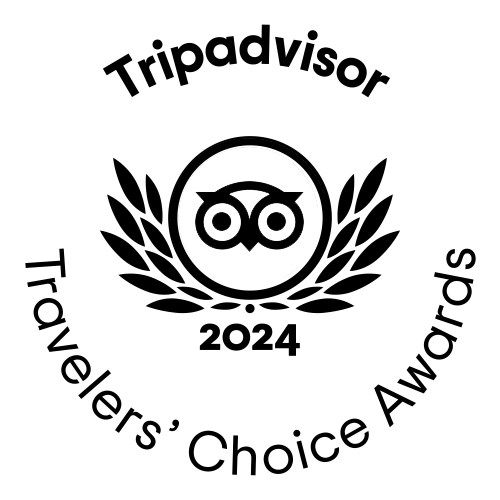First time in Ho Chi Minh City: Best things to do and see
Ho Chi Minh City , still commonly known as Saigon, is the heart and soul of Vietnam. It’s a bustling, dynamic and industrious centre, the largest city (9.5 million), the business capital and the cultural trendsetter. The best unusual things to do in Ho Chi Minh City are in the streets, where much of the city’s life takes place, is a myriad of shops, stalls, stands-on-wheels and vendors selling wares spread out on sidewalks.
The city churns, ferments, bubbles and fumes. Yet within the teeming metropolis are the timeless traditions & beauty of centuries old culture. Sights to see in Saigon include the Giac Lam Pagoda, the neo-Romanesque Notre Dame Cathedral, Reunification Hall, Cholon market and the former War remnants museum, scene of such havoc during the 1975 evacuations.
And, that’s not all, the city is changing rapidly and we back you up for an up to date list of best things to & travel guide in Ho Chi Minh City, in 2025.
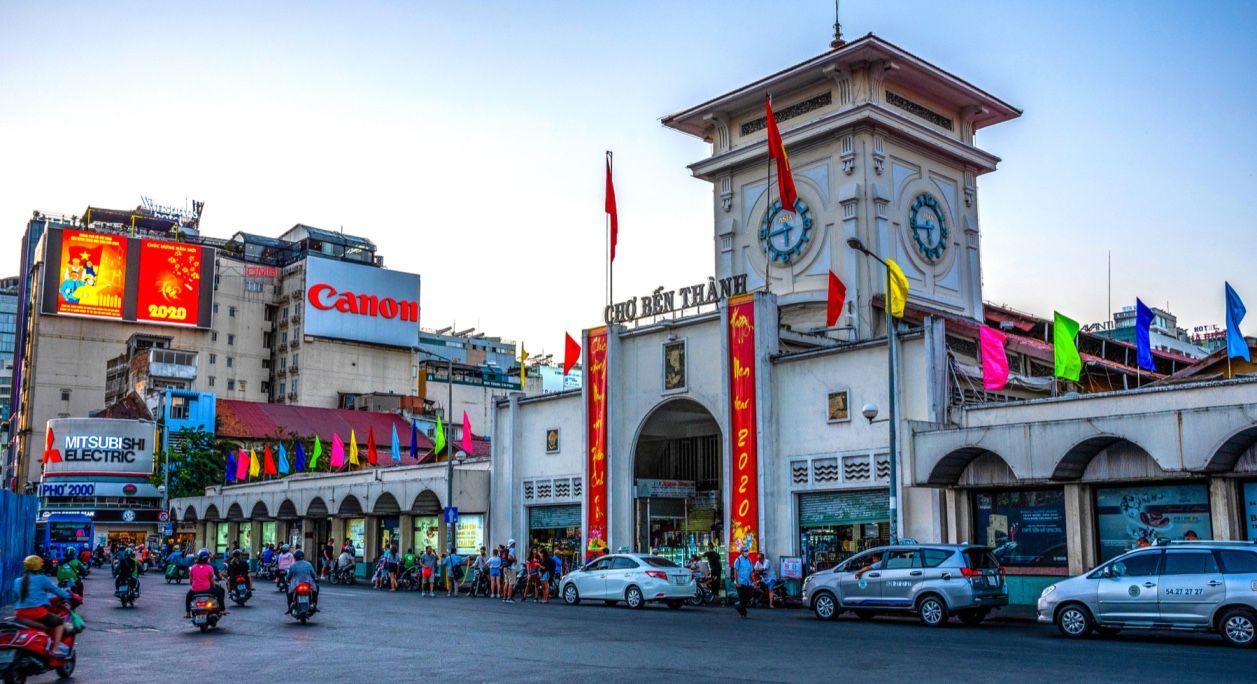
Practical information
The heart and soul of Vietnam, Ho Chi Minh City, certainly lives up to its reputation as a travel hot spot in Southeast Asia with it’s has funky markets, luxury hotels, a painful history & an unusual nightlife, many fabulous sights and attractions that reflect its unique heritage/
Time zone: Vietnam standard Time (ICT), UTC+7
Currency: Vietnamese Dong (VND)
Language: Vietnamese
Best time to go: December to April (dry season)
Visa: Some European, ASEAN will get one on arrival, rest of the world require to apply – Check Vietnam visa requirements
Tipping: Not required, but always appreciated
Wifi: Widely available
Sim cards: Easy to buy, get one on arrival with around 100k -200k VND (5-10 USD)
Best areas to stay: Bui Vien street for backpackers, Thao Dien for expat areas
Why Should You visit it?
22 of the Best & Unusual Things to Do in Ho Chi Minh City
Fasten your seatbelts as Ho Chi Minh City is a metropolis on the move – and we’re not just talking about the motorbikes that buzzing the streets. Saigon is home to French colonial architecture, host some of the best pagodas in Vietnam at its most dizzying is a place of culture that has driven the whole Vietnam forward with its limitless energy.
1. War Remnant Museum
Opened in 1975, just a few months after the liberation, the War Remnants Museum is one of the most popular attractions & among the top places to see while in Saigon. Laid out in 8 themed rooms are different aspects of the war from imprisonment, to chemical warfare and military might.
Practical Info
The museum of top places to see in Saigon & is still relatively central; walkable from Ben Thanh market – only a couple of blocks behind the Reunification Palace.
The entrance fee: 40,000 VND (about 1,5 USD) for adults and 20,000 VND (<1 USD) for children, students & war veterans.
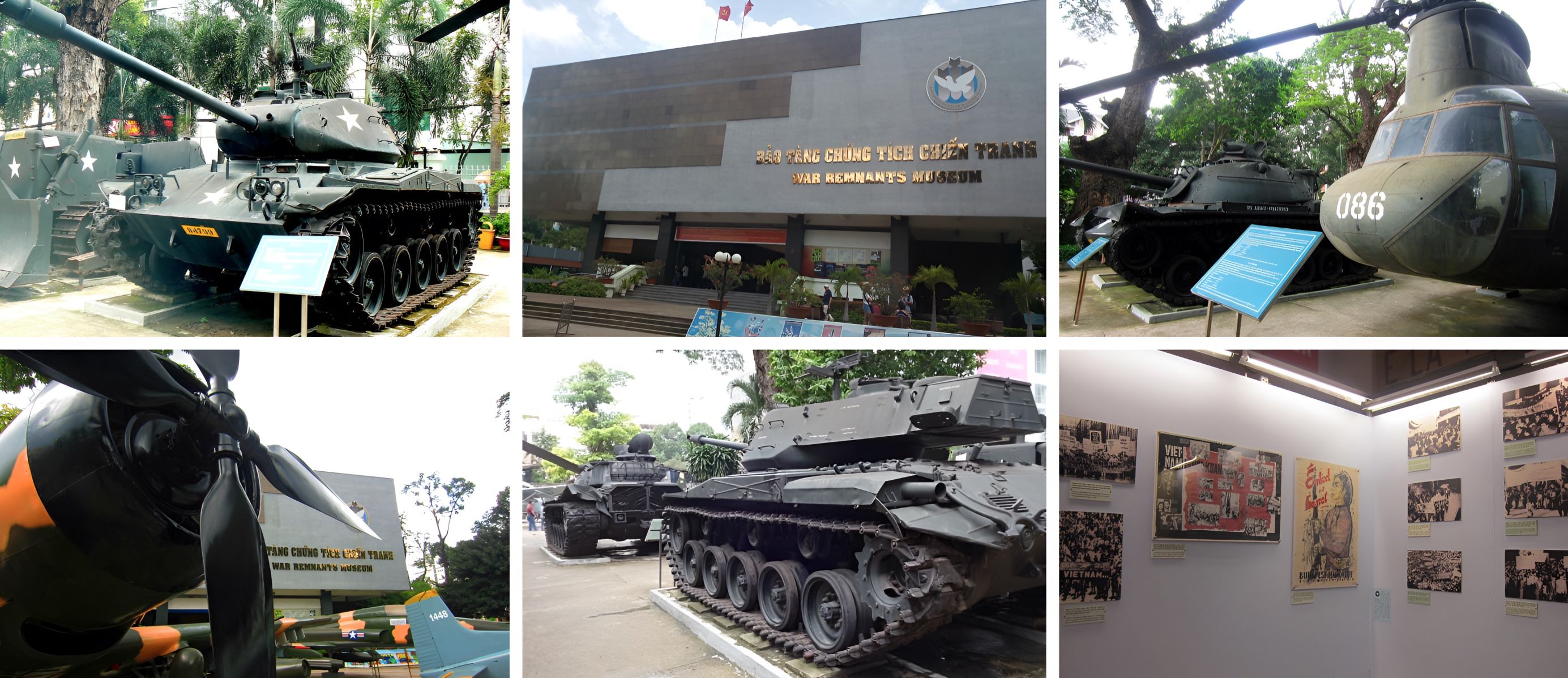
2. Cu Chi Tunnels
Practical Info
Located approximately 20 mi (30 km) northwest of central Ho Chi Minh City, off the road to Tay Ninh town. Opens daily from 9am to 5pm.
Cu Chi Tunnels entrance fee: 70.000 VND (2.5 USD)
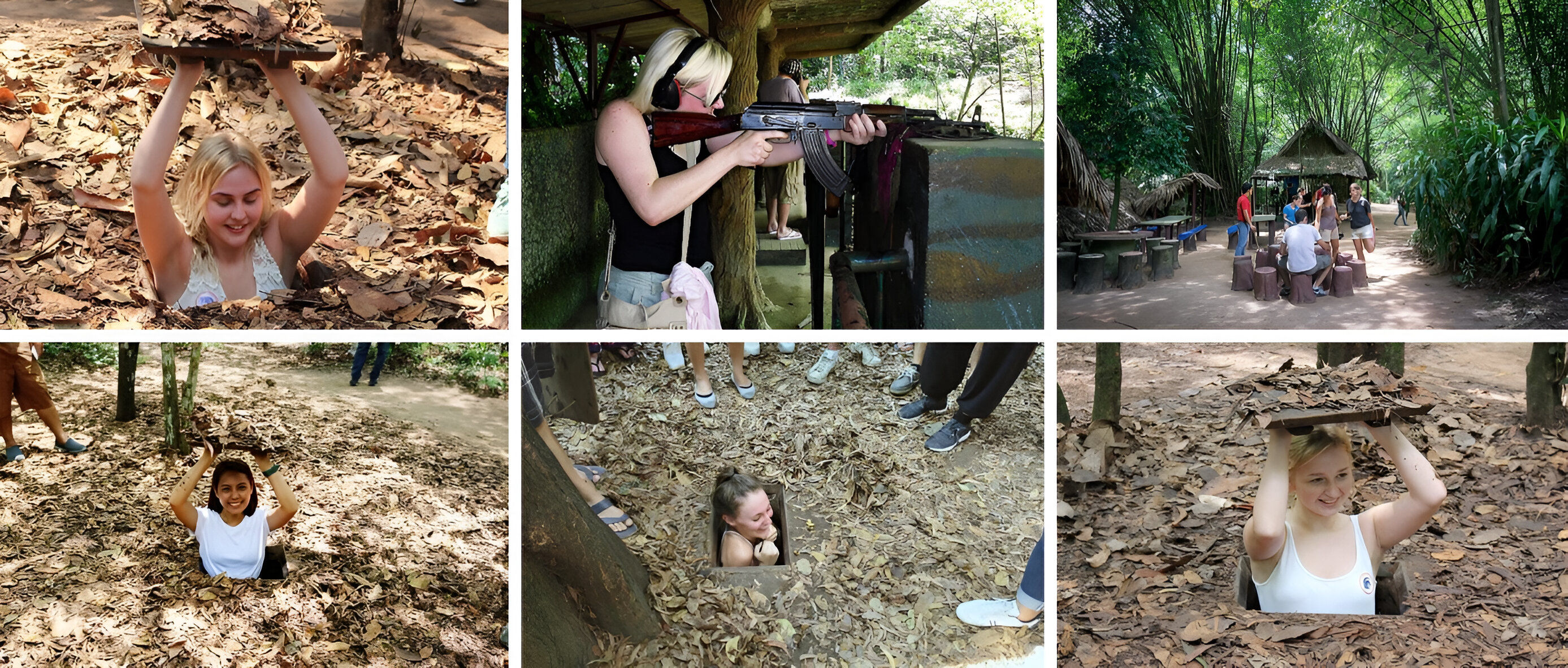
3. Saigon central post office
Few major cities count the post office among their top tourist attractions, but the classic interior of Saigon Central Post Office continues to be a favorite destination among travelers visiting such a landmark in Ho Chi Minh City for the first time.
Practical Info
The Central Post Office is free to enter & is located near the corner of Nguyen Du and Cong xa Paris, within walking distance from the Cong xa Paris bus stop. It is across the street from Notre Dame Cathedral.
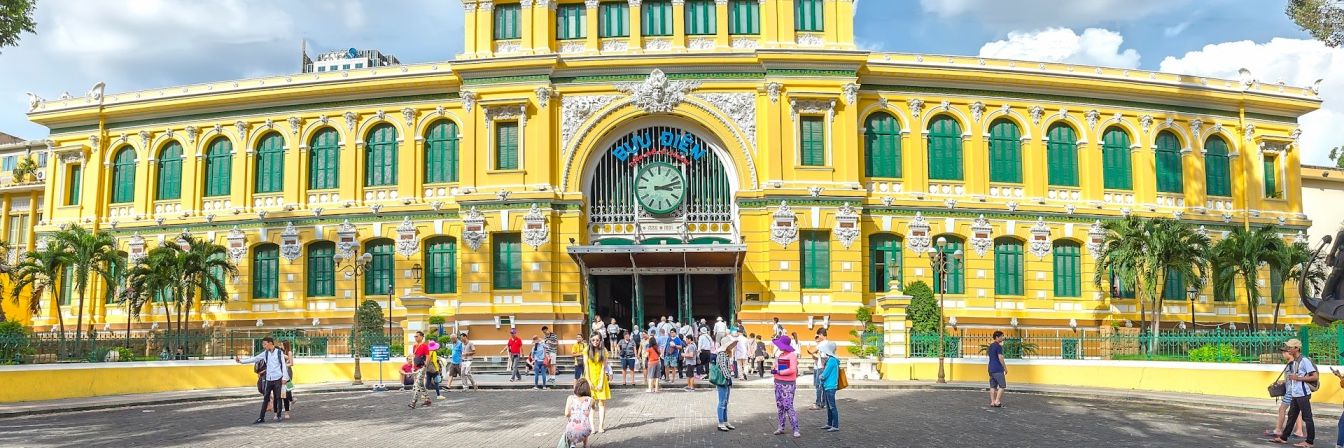
4. Saigon Notre-Dame Basilica
Out of best places to visit, the Gothic twin bell towers of this classic cathedral stretch high into the skyline, marking this as a destination for those looking to escape the buzz of Ho Chi Minh and find some quiet contemplation. Saigon Notre-Dame’s striking red façade and towering stone archways were constructed with materials imported from France in the 1800s. But its unique architecture is not the only draw to this iconic city landmark.
Practical Info
Free to enter, no entrance ticket is required – Saigon Notre-Dame Basilica (Saigon Notre-Dame Cathedral) is located in downtown Ho Chi Minh between Le Duan and Nguyen Du near the Cong xa Paris bus stop. It is a block northeast of the Reunification Palace.
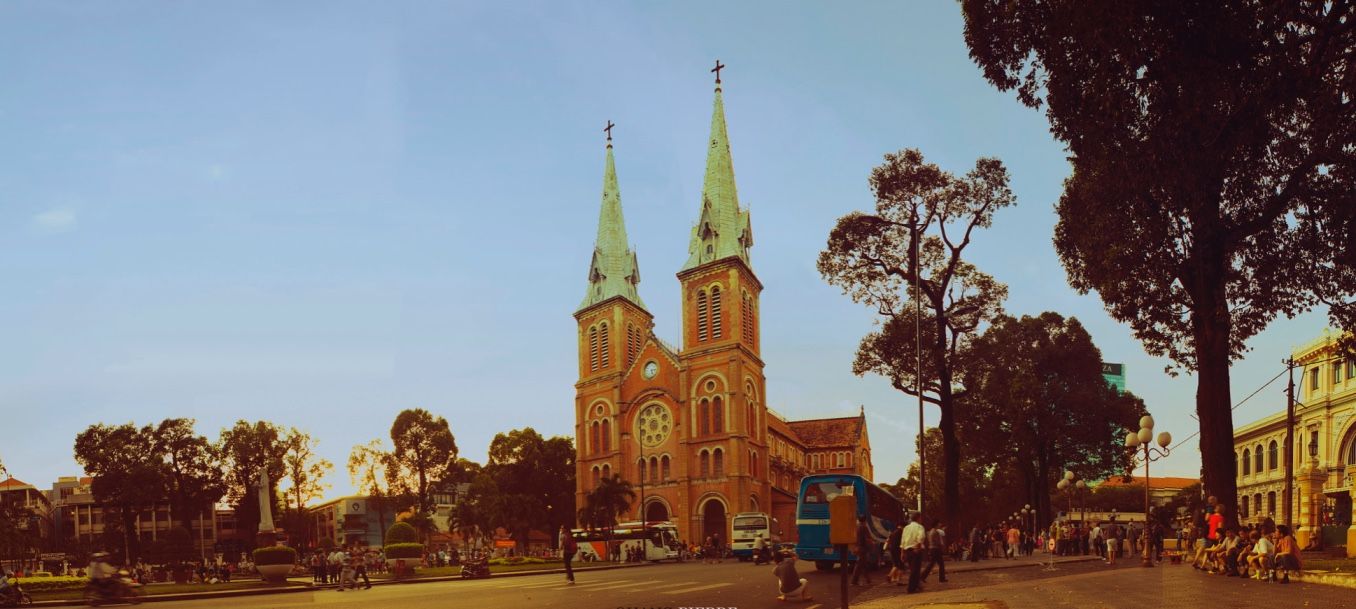
5. Saigon foodie tour with motorbike at night
Street foods are part of the daily life in Ho Chi Minh City (Of course in Vietnam as well) isn’t an exception with food tours offered as an activity, specially at night. There are countless places offer foodie tour, however, the local way says something different. The street foods you eat in Saigon are represents the dishes from all the corners of the country and the best way to experience this unique culture encounter would be to go local and join a “Saigon Street food tour on back of a motorbike” together with a visit to some of the night-markets held every evening in the city.
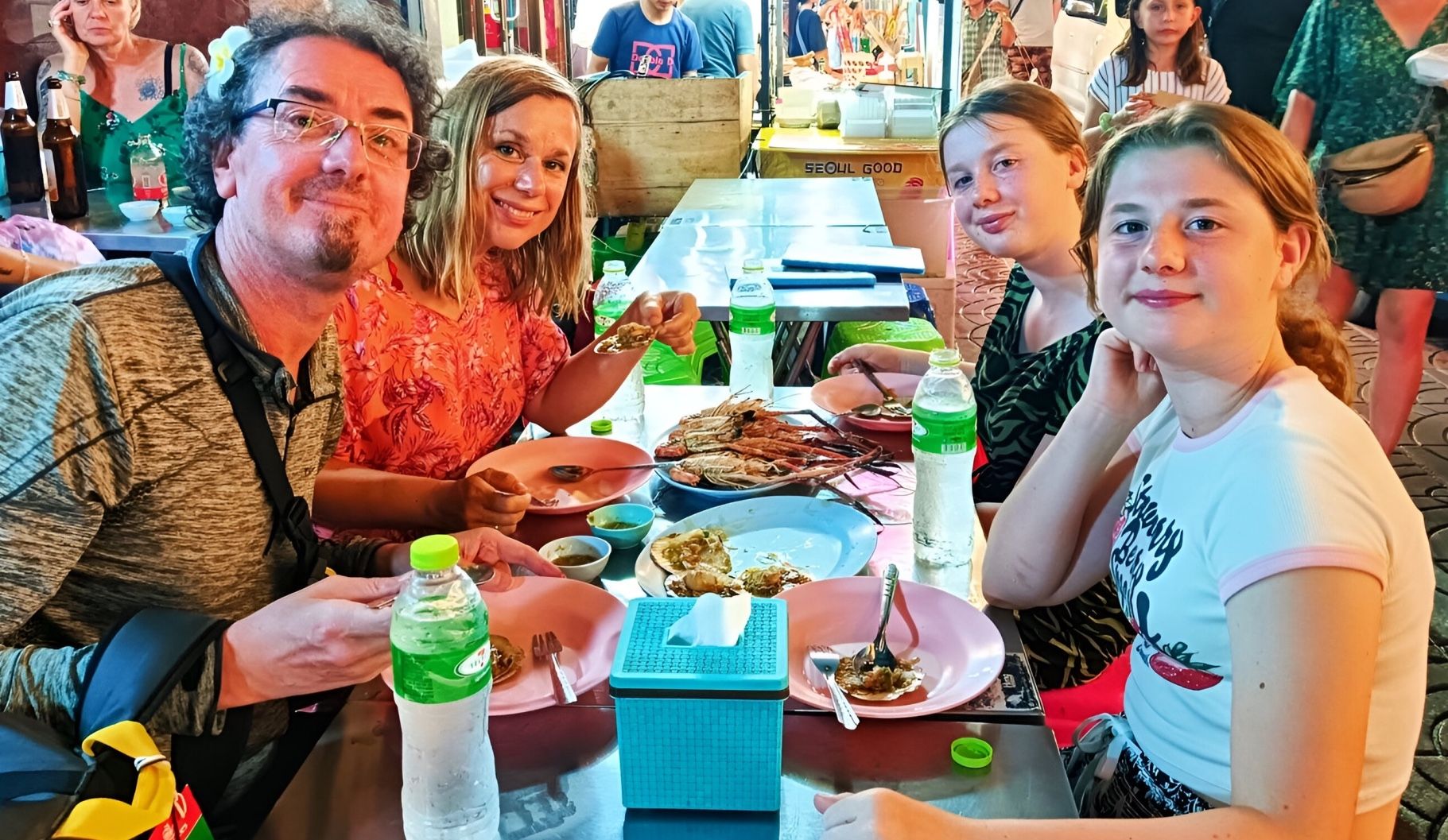
6. Reunification Palace (Independence Palace)
This is an important site of political & cultural significance, built by the French in 1868 to mark the newly established colony of Indochina.
Today it is a working government building as well as having areas open to the public as one of the must see tourist attraction & sights in Ho Chi Minh City. Visit the private quarters, the president’s former office and the War Command Room. You get a real sense of what happened here and its importance in Vietnamese history.
Practical Info
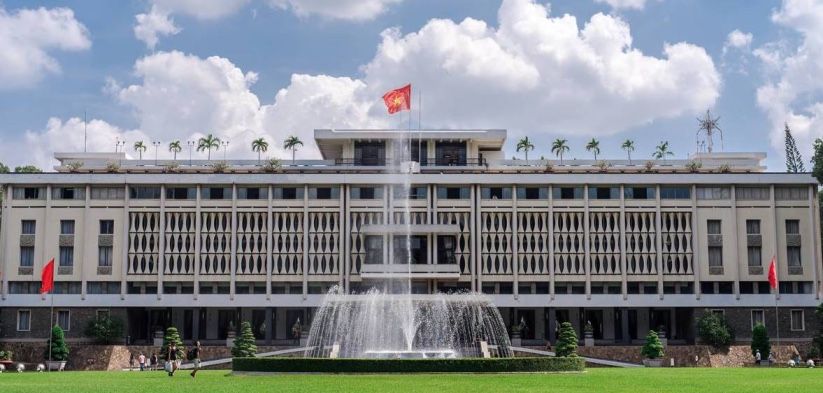
7. Jade Emperor Pagoda
Built at the turn of the 20th century and dedicated to the Taoist god, Emperor Jade Chua Ngoc Hoang (or the God of Heavens), the Jade Emperor Pagoda is a working temple that’s widely considered to be one of the finest and most atmospheric sights to see in Ho Chi Minh City.
To the right of the treelined courtyard in front of the temple grounds is an overcrowded tortoise pond, earning the temple its nickname, Tortoise Pagoda. Learn more about Religions in Vietnam
Practical Info
The pagoda is opens daily from 7am-6pm and located at the address: 73 Mai Thi Luu, District 1, Ho Chi Minh. There is no entrance fee, however, donation is appreciated and visitor are advised to dress modest.
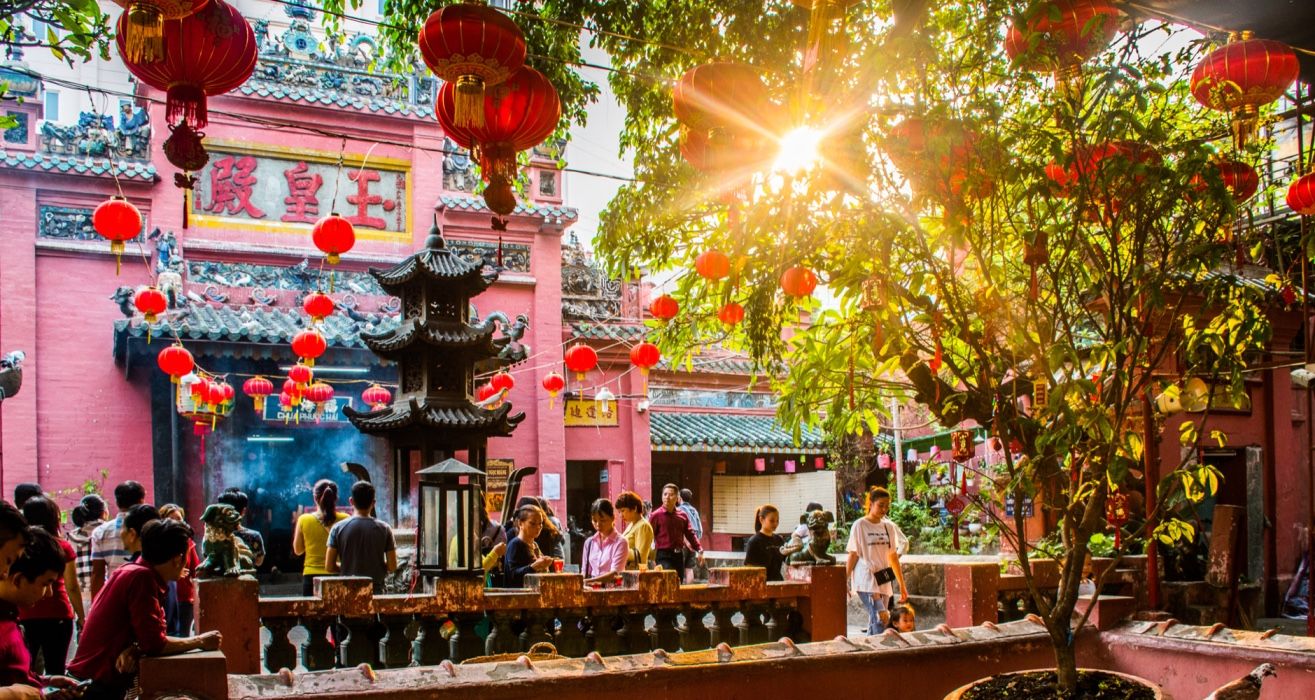
8. Ben Thanh Market
Definitely an unusual things to expect. If shopping is in the list of your “What to do”, then, the most central of all, teeming Ben Thanh and its surrounding streets comprise one of the city’s liveliest areas.
Let the spirit of the city lift you up and carry you through this network of colorful bustling activity. Cho Ben Thanh, or Ben Thanh Market, comes alive every evening with a thrum of tireless energy that never ceases to enthrall.
Practical Info
Address: Cnr Le Loi, Trang Hung Dao, Le Lai – Hours: Open daily. Comes alive around late afternoon/sunset, wraps up in late evening – Admission: Free to enter the Ben Thanh Market.

9. Saigon Opera House
Known as Ho Chi Minh City Theater (Nhà Hát Thành Phố Hồ Chí Minh), is a landmark piece of French colonial architecture. Here is where east meets west at this stunning example of French Colonial architecture in the heart of Ho Chi Minh City. The gleaming white municipal theater, which is home the Ho Chi Minh City Ballet and Symphony Orchestra, was built in 1897.
Its well-lit façade casts a brilliant glow on nearby city streets. Visitors can file into the 1,800 seat theater to catch regular dress rehearsals, or buy a ticket for one of the weekly cultural shows the theater is known for. On weekends, free public performances take place on the opera house steps and the nearby park offers travelers a perfect spot to stop and enjoy the music.
Practical Info
The Saigon Opera House is located at, address: 7 Lam Son Square in the Ben Nghe Ward of District 1 within walking distance of the 101 Hai Ba Trung bus top. The Opera House is an easy walk from the Post Office and Notre Dame.

10. Mekong River Delta
The Mekong Delta is a top peak for a day tour from the city. It covers an area of approximately 15,000 square miles (40,000 square kilometers) to the west of Ho Chi Minh City. The Mekong Delta is where the mighty Mekong river completes its 2,700 mile (4,300 km) journey from the Tibetan plateau and empties its riches into the South China Sea.
The area is rich in lush green vegetation and the pace of life is relaxing, the setting natural and serene. This makes for a great break away from the hustle of the city and an insight into local life. Check out best day trips from Ho Chi Miny City
Practical Info

11. Chợ Lớn (The Chinatown)
Cholon dominates the west bank of the city, boasting the attractions of Quan Am Pagoda, Thien Hau Temple, Binh Tay Market and numerous teahouses. Visit this long-established Chinese community (the largest of its kind in Vietnam) and soak up the fascinating culture, architecture and sights.
Cholon Mosque and Cha Tam – the catholic cathedral – as well as the thriving Binh Tay market also add to the rich texture of this historic community. Check out Saigon Halal foods
Practical Info
It is covering districts 5 & 6, can be reached by boat from the jetty on Saigon river down Ben Nghe channel, or by taxi or bike. Head for Binh Tay Market as a central starting point. From here hire a cyclo by the hour to leisurely cruise Nguyen Trai Road and its nearby streets to Quan Am pagoda and Thien Hau temple as you take in the area’s unique atmosphere.
Address: Centered around Nguyen Trai, Districts 5 & 6 – Admission: Free, no ticket required

12. Thien Hau Temple
The Thien Hau Temple. Built by Cantonese immigrants in the early 19th century, this temple honors the goddess of the sea, Thien Hau (more commonly named Mazu).
Practical Info

13. Saigon skydeck
Practical Info
The Saigon Skydeck is located near the corner of Ho Tung Mau and Hai Trieu in the Central Business District. It is on the 49th floor of Bitexco Financial Center and open daily from 9:30 a.m. until 9:30 p.m. Entrance fee / ticket / Admission fee is about 255k VND (USD10)
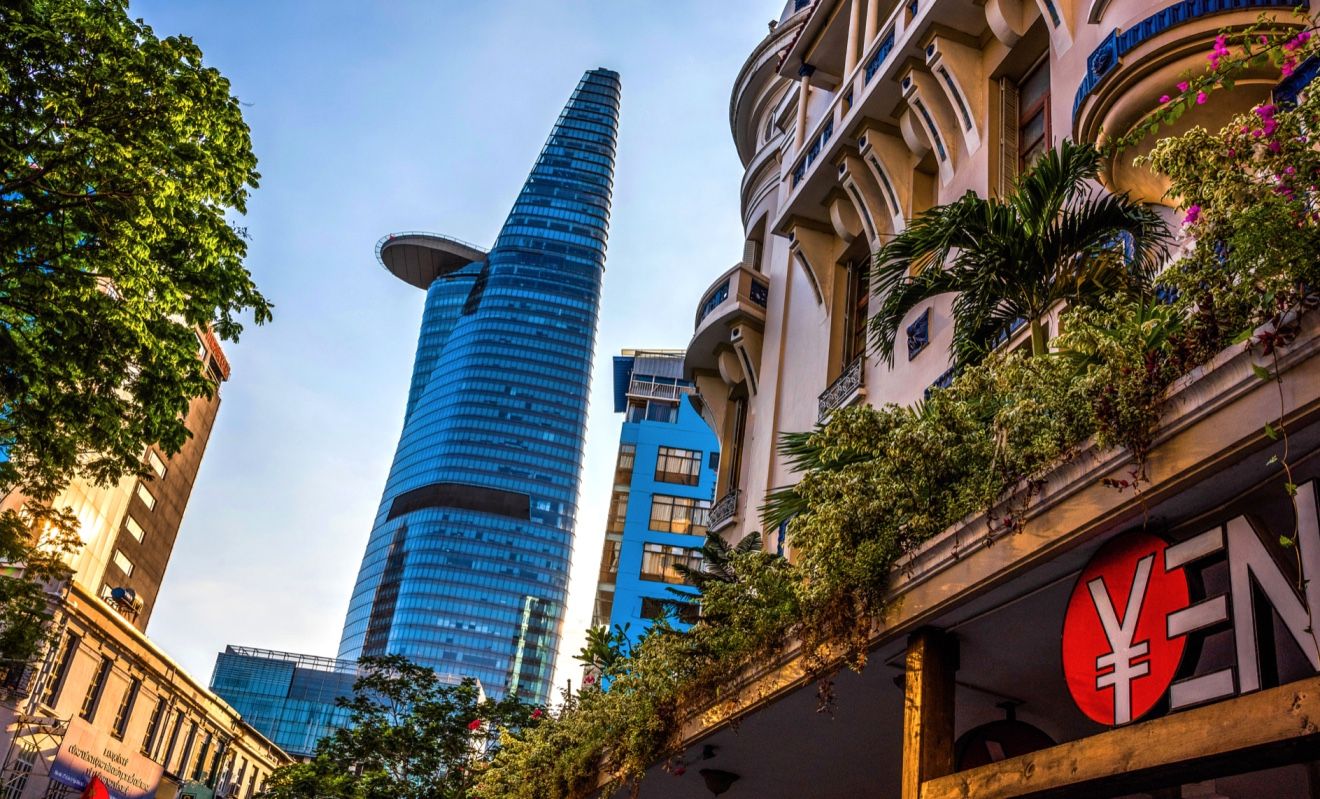
14. Saigon River
The best way to experience the river is by plying its waters in a traditional Vietnamese junk boat. Many such tours offer a meal — usually lunch or dinner — along the way. While it’s possible to see the river for the river’s sake, you can also use the river to get to the popular Cu Chi Tunnels used by the Viet Cong to infiltrate the area surrounding Ho Chi Minh City during the Vietnam War.
Practical Info
Activities in the Saigonr river include: Saigon River Dinner Cruise: Buffet, Set Menu.

15. Can Gio Mangrove Biosphere Reserve
Practical Info
Can Gio can be reached by boat or car from Ho Chi Minh City, and tours may stop at a riverside market or Can Gio Museum before venturing into the wilderness of the reserve. Trips include meals, transportation, guides, and entrance fees. Admission and tickets are varies depending on the type of activity you taking.

16. Giac Lam Pagoda
Widely recognized as an important and historic pagoda, the oldest temple in the city. Built in 1744 on an undeveloped area of jungle, it has since been consumed into the west of the city.
Practical Info
Located on Lac Long Quan, to the north of District 5, (not in Cholon area). May be combined with a visit to Cholon but a cyclo or taxi trip would be necessary to reach it.
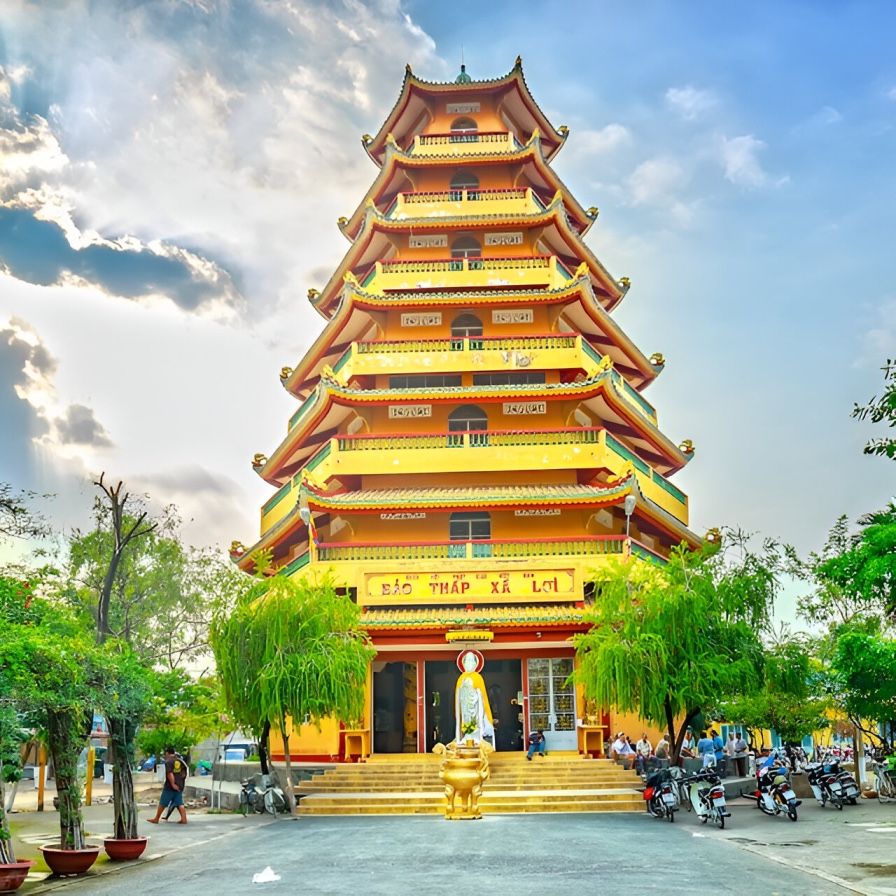
17. Cao Dai Temple
Practical Info
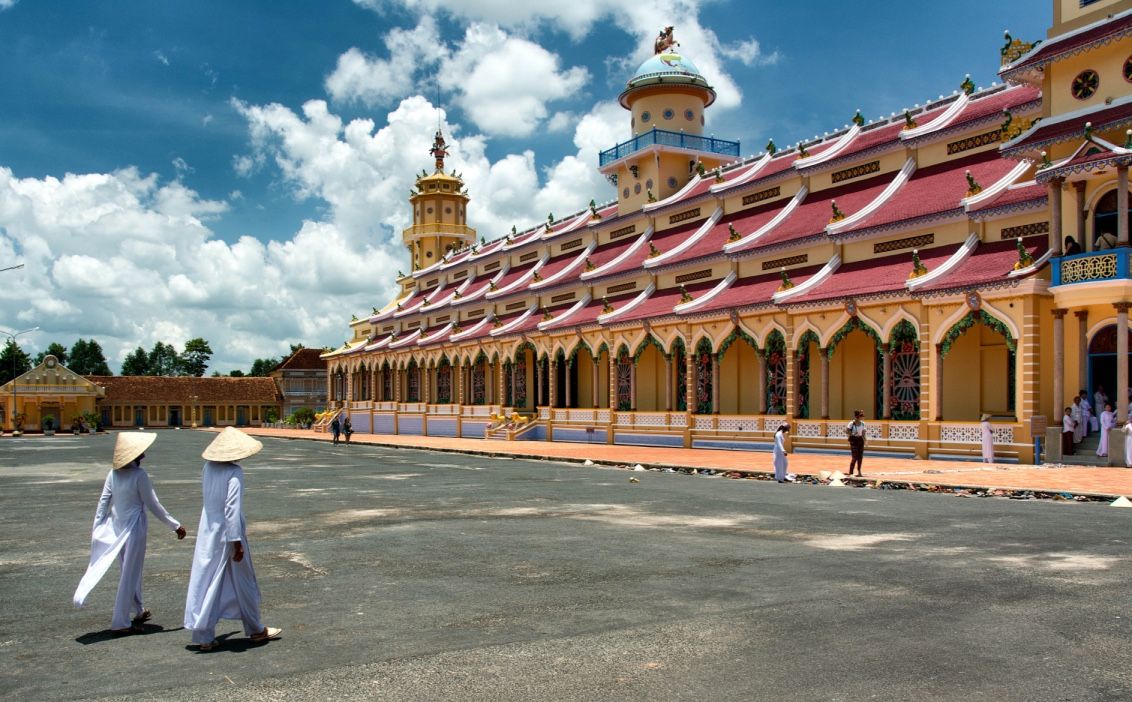
18. Cai Be (Floating Markets)
Deep in the rice paddies of the Mekong Delta, you can visit the bustling floating river market at Cai Be. The riverfront village is a major hub for the farmers, wholesalers and buyers who congregate here into a raft of produce-laden longtail boats, and the agricultural products bought and sold at this market are distributed throughout the country.
Practical Info
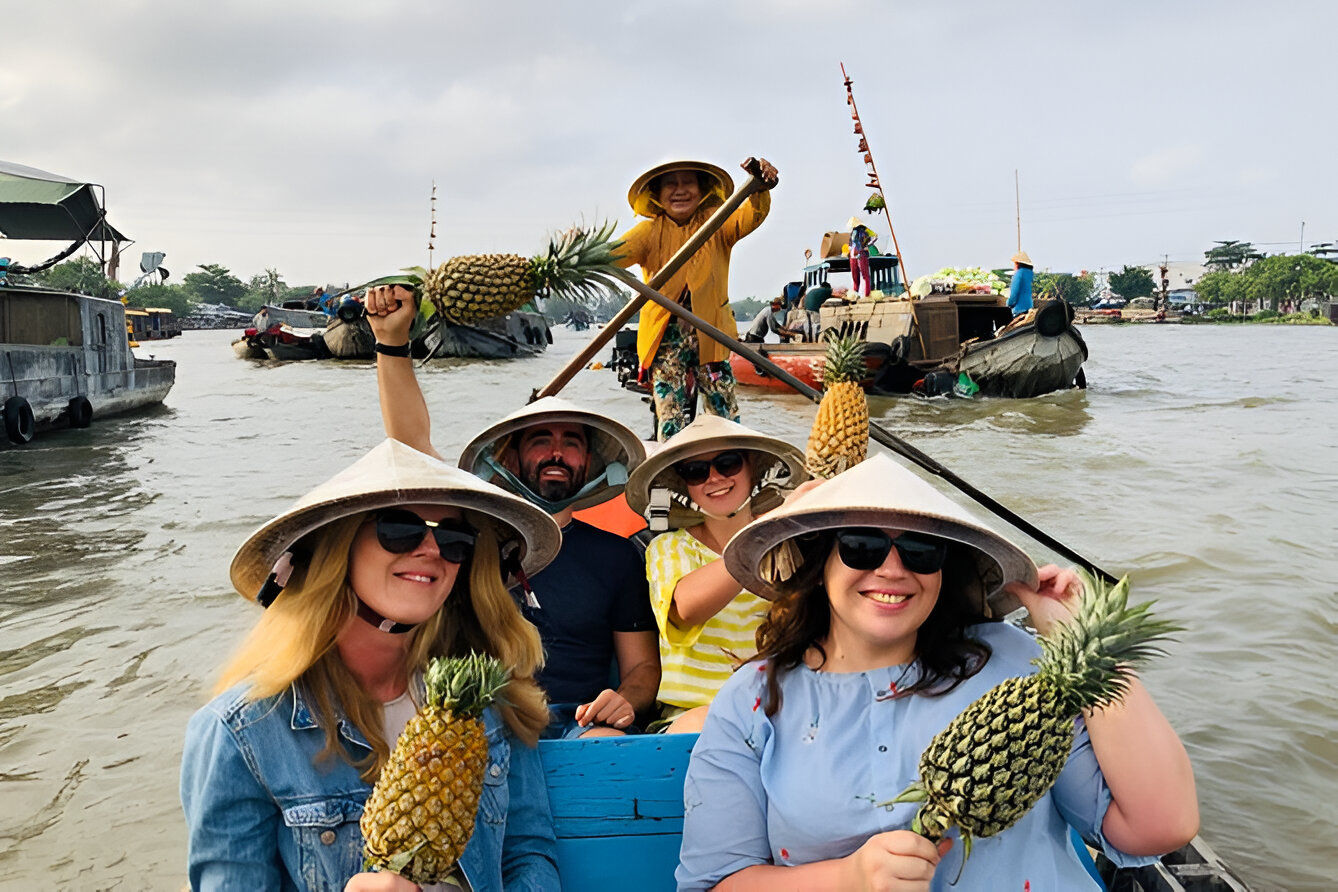
19. Dong Khoi Street
The colorful cafes and cheap hostels of Pham Ngu Lao Street may attract a budget-friendly crowd, but the well-heeled set know that Dong Khoi Street, with its elite boutiques, French architecture and trendy cafes is the premier commercial center of the city, for things t see and attractions around the area.
Travelers can wander through up-market shops selling silks and other handmade items, or comb through the stocks of high-end luxury brands at more mainstream stores. Visit the polished storefronts and quaint cafes off the hidden side streets for a less touristy vibe, and head to the nearby opera house, Notre Dame Cathedral and Central Post Office to take in some of the city’s most popular sites. All about best places to see in Saigon.
Practical Info
Dong Khoi Street (walking street of Saigon) is easily accessible from the 60, the 58 and the 13 buses.
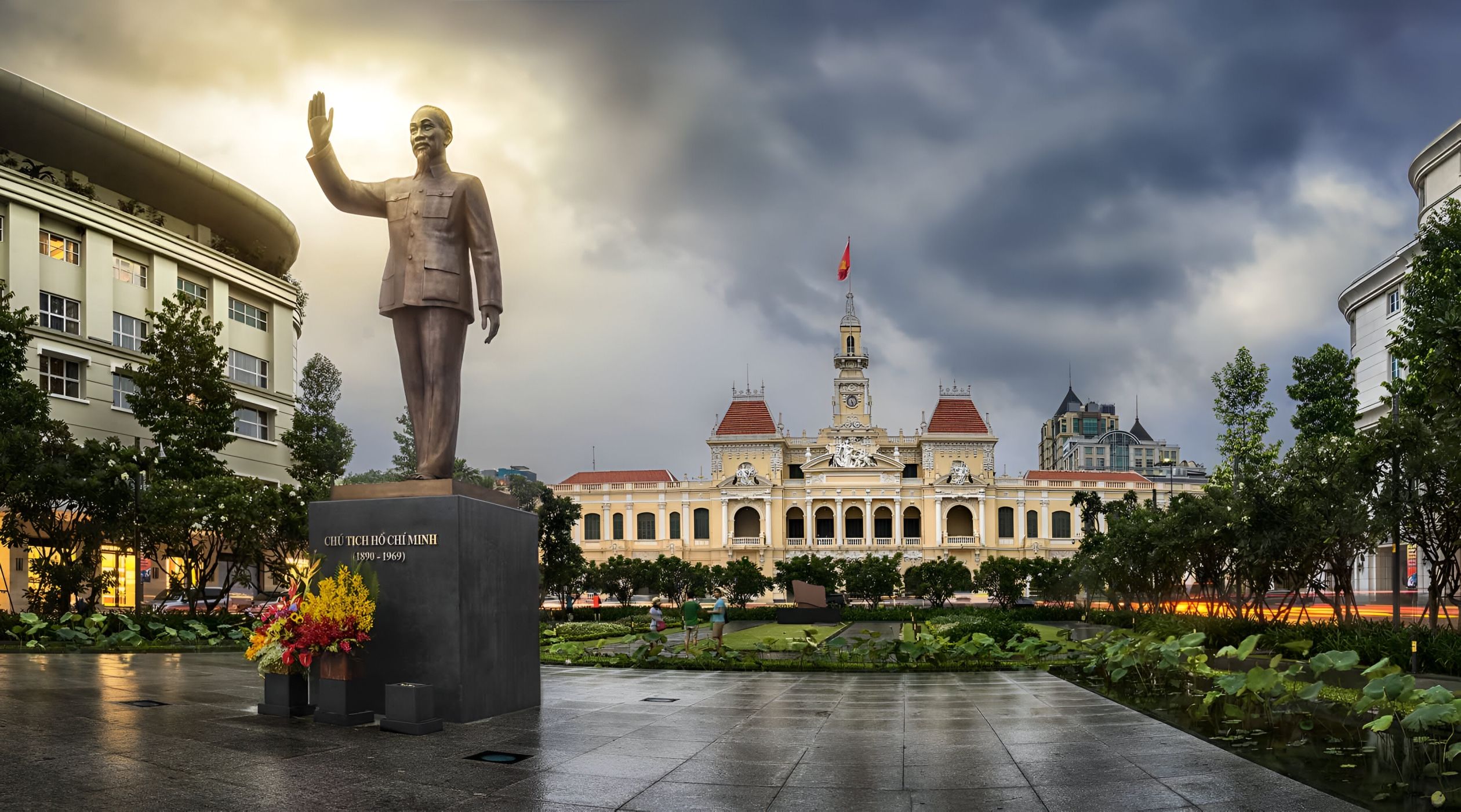
20. Cu Chi Wildlife Rescue Station
One of the many must see places around Saigon and is often included as part of a tour to the nearby Cu Chi Tunnels, Cu Chi Wildlife Rescue Station is a rescue and rehabilitation center for rare wild animals that have been confiscated from illegal animal traders in Ho Chi Minh City.
The types of animals taken in include bears, gibbons, pangolins, cobras, sea turtles, and monitor lizards, among many others. The center is run by local non-governmental organization Wildlife at Risk, and it’s the first multi-species rescue station in the South of Vietnam. Visitors can make arrangements to tour the center, meet many of the animals, and even help with feeding or preparing food for the animals.
Practical Info
21. Dam Sen Water Park
Practical Info
An attraction for locals and visitors alike for some water activities in Ho Chi Minh City. At times a place to relax, recharge and revitalize, at times a lively theme park, Dam Sen Water Park offers great value and variety for all.
Address: 3 Hoa Binh, District 11 – Opening Hours: Wed – Mon 9am – 6pm. Closed Tuesdays – Admission: Adults (over 160cm) 160.000VND – Kids (below 140cm)100.000 VND – Package ticket from 220 – 300k VND (10-15 USD)
22. Quan Am Pagoda
Travelers can enter into this charming 19th-century Chinese-style Buddhist pagoda via an ornate gatehouse, which leads the way to an impressive courtyard and several altars that make up one of Ho Chi Minh’s most popular pagodas & things to see.
Practical Info
Quan Am Pagoda is located on Lao Tu Street in Cho Lon in District 5 of Ho Chi Minh. No entrance ticket.
FAQ: Ho Chi Minh City
Saigon is a name conjures up a thousand jumbled images, besides popular things to do in Ho Chi Minh City, skip the touristy things and wander through timeless alleys to ancient pagodas or teeming local markets, past ramshackle wooden shops selling silk, spices and baskets, before fast-forwarding modernity into the future beneath sleek skyscrapers or at designer malls, gourmet restaurants and unusual minimalist bars.
How Many Days Should You Spend?
3-4 days is the answer, however, how Many Days to Spend in Ho Chi Minh City is greatly depends on your travel plan – The city’s home to great sights, things to do, and where all the untold story of Vietnam war begins. Generally, you could experience all the treasures in just a 3 days at minimum.
If you extend your stay to 4-5 days, you could head to experience Cu Chi, Mekong and probably Vung Tau for a beach fun. Make sure to check out → Vietnam 4 weeks travel itinerary
ATM’s & money exchange
The money exchanges are also available through the banks, but usually both local sand tourists refer to Ben Thanh Market for money exchange tat tends to have better rates than banks. Check out Vietnamese Money & ATM
Local festivals & events
Best time to visit
Basically, Ho Chi Minh City along with the southern Vietnam has two seasons: the wet (May to November, wettest from June to September) and the dry (December to April). The hottest and most humid time is from the end of February to May. Check out Weather in Ho Chi Minh City
- February: with little or no rain, with the lowest humidity – this is the time city is celebrating the lunar new year.
- March: Most of the days with clear sky, some rain during the late hours and almost no humidity.
- December: Dry month for Ho Chi Minh City with temperature start to drop.
Where to stay
Food & Drinking
Flights to Ho Chi Minh City
Tan Son Nhat International Airport in Ho Chi Minh City runs several daily flights to Hanoi, Danang, Nha Trang, Phu Quoc and other major cities in Vietnam. Vietnam Airline, the national career operate all the routes. Other airlines too.
Ho Chi Minh City to Hanoi by bus
Train to Ho Chi Minh City
How to get around Saigon?
Things to do in Ho Chi Minh City at night
What to do in Ho Chi Minh City in 3 days
The Ho Chi Minh City’s experience is about so many things to do, 3 days, 4 days, or even 7 days itineraries would keep you you busy. The city offers locals and tourists an abundance of fascinating museums, historical sites, lively neighborhoods, fantastic restaurants, and more coffee shops and cocktail bars than you can count. A 3 days itinerary could well cover all the best things to do including tourist attractions & day trips.
Day 1: Explore Saigon city center
Start a 3-day itinerary in Ho Chi Minh City with a Vietnamese coffee at one of the city’s many cafés. Try Cà Phê Sữa đá, an iced coffee with condensed milk. Then, visit the Notre-Dame Cathedral, a stunning example of French colonial architecture built between 1877 and 1883, featuring imported red bricks and beautiful stained-glass windows.
Places / Sights to see in the afternoon
In the afternoon, head to visit the War Museum. This powerful museum offers deep insights into the impact of the American/Vietnamese war. The museum, housed in a large three-story building. Allocate at least two hours to explore it fully.
Next, visit the nearby Independence Palace, the former residence of the President of South Vietnam. This museum documents life during the war and the dramatic moment in 1975 when a North Vietnamese tank breached its gates, signaling the war’s end.
Day 2: Excursion to Cu Chi Tunnels
You can’t miss this day on a Ho Chi Minh City itinerary, explore the Cu Chi Tunnels, a vast network of underground passages used by the Viet Cong during the Vietnam War.


